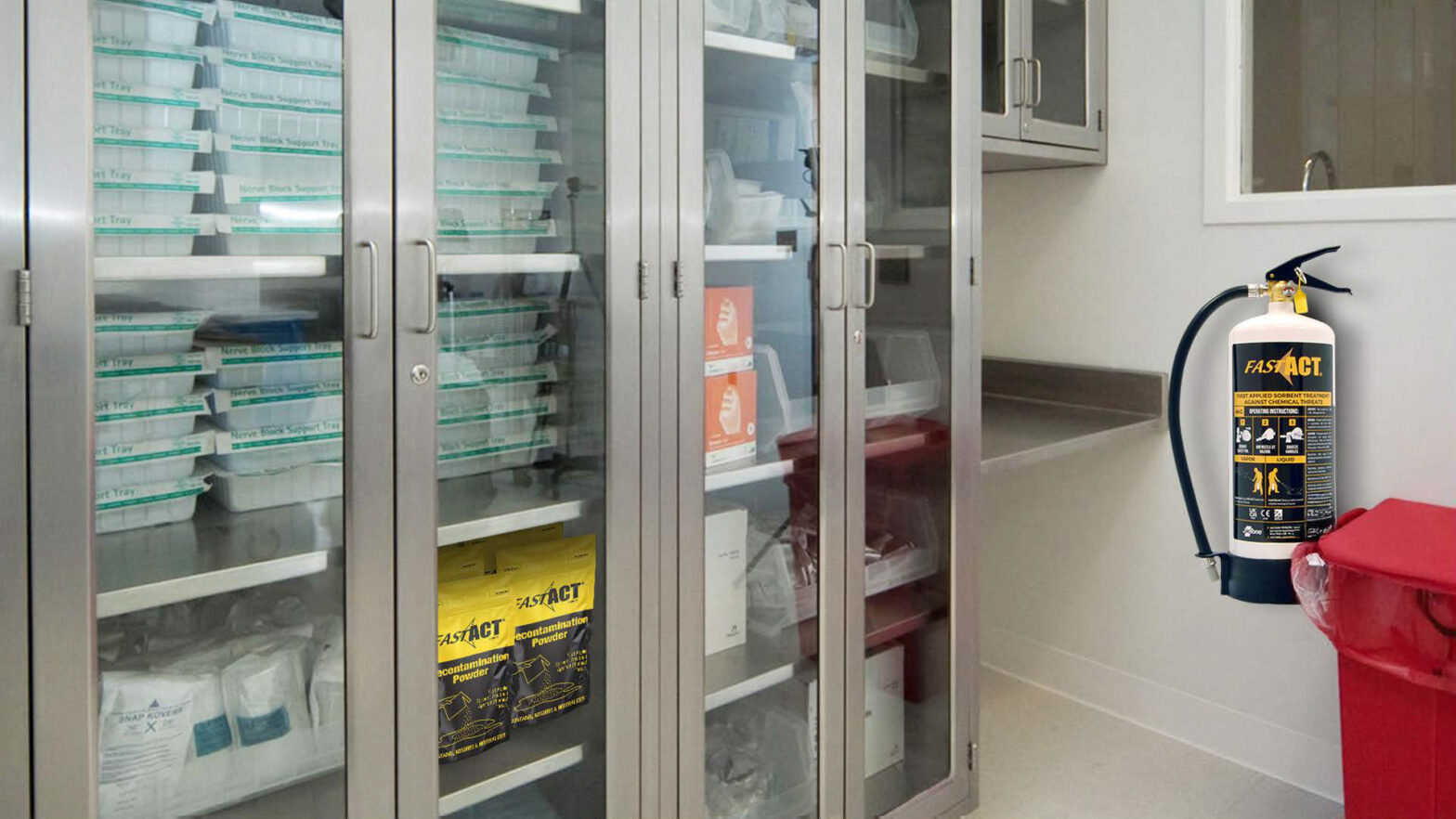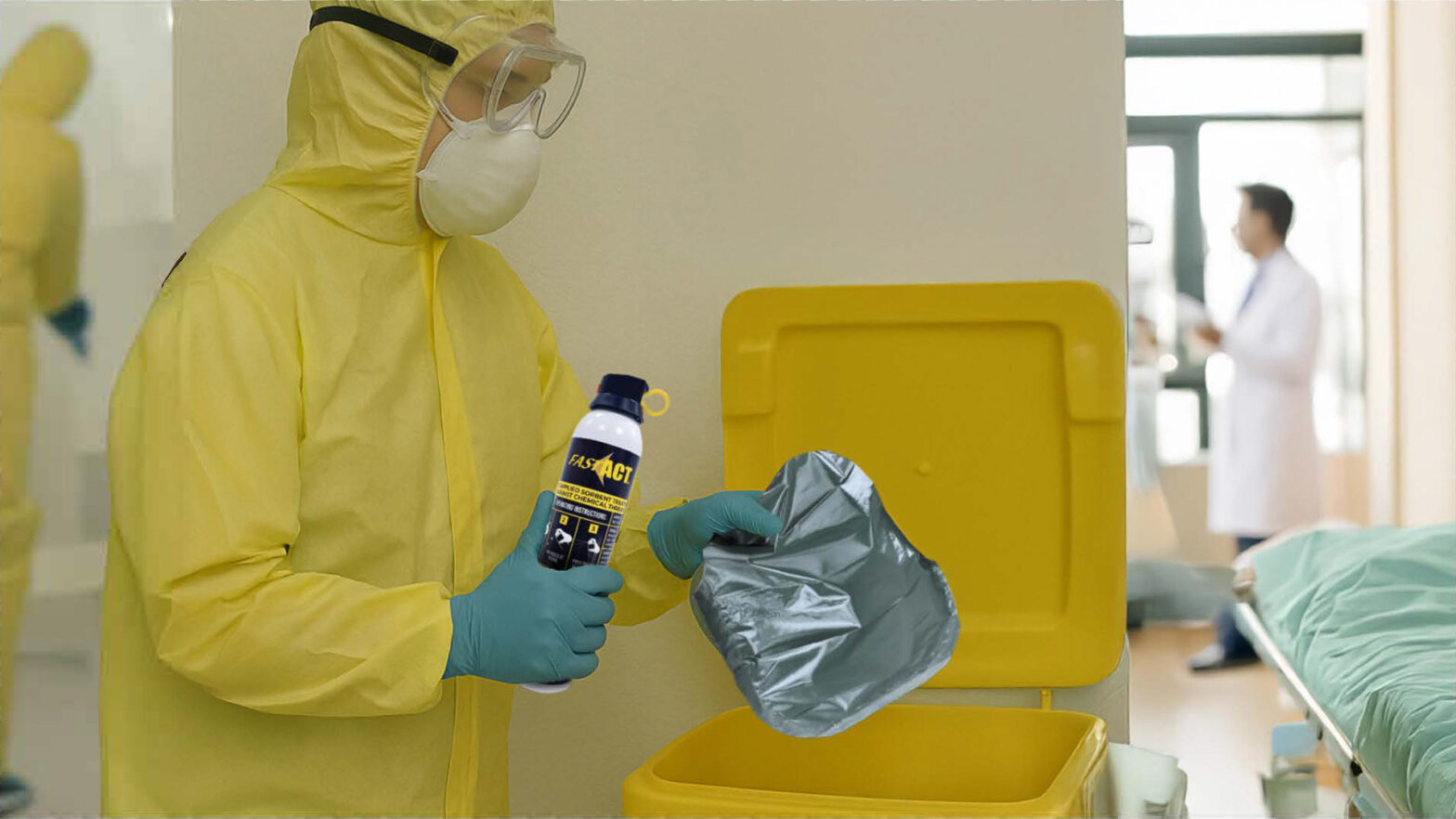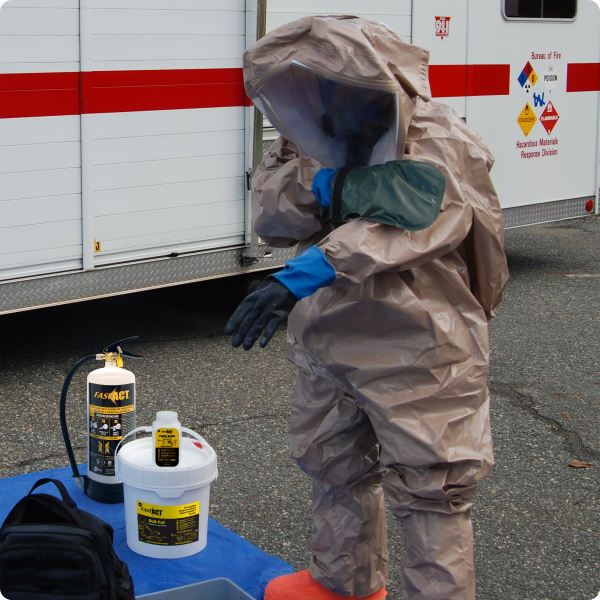When hazardous materials are released—during a chemical spill, civil unrest, or exposure to unknown powders—time is critical. Rapid decontamination can dramatically reduce the risk of chemical exposure, limiting health threats to responders and the public.
Tag: FAST-ACT Pressurized Cylinders
Understanding Cyclosarin: A Comprehensive Guide to Its Chemical Properties and Effects
This guide breaks down cyclosarin’s chemical properties, health effects, and environmental behavior, while also showing how FAST-ACT decontamination solutions protect communities against these toxic chemicals.
Hospital Decontamination Without Compromise: Protecting Patients, Staff, and Equipment
This post concludes our hospital decontamination blog series, following Part 1: Rethinking Hospital Decontamination and Part 2: Inside the Protocol: A Hospital SOP for Dry Chemical Decontamination.
FAST-ACT August Event Highlights: Supporting First Responders Nationwide
This August, the FAST-ACT team was on the road providing hands-on training and support to first responders facing today’s most urgent chemical and hazardous material threats.
Inside the Protocol: A Hospital SOP for Dry Chemical Decontamination
In the face of chemical incidents, hospitals are often the first point of contact—before any decontamination protocols have been applied. For regional emergency department staff, this poses immediate risks: volatile chemicals, systemic toxicity, and potential secondary contamination that could impact both patients and staff. A fast, reliable, and adaptable protocol becomes essential.
Not All Dry Decontamination Is Created Equal: What to Look for in a Real Solution
Not all dry decontamination tools perform the same. Some are built to absorb or contain, while others are designed to neutralize the threat entirely. If your team is deciding between dry options, here’s what to know before making the call.
Rethinking Hospital Decontamination: Why Dry Decon Belongs in Your Emergency Plan
In the event of a chemical incident or mass casualty event, hospitals must act quickly to protect patients, staff, and infrastructure. Traditional water-based technical decontamination has long been a standard protocol, but it brings limitations—especially during high-pressure scenarios where rapid, scalable response is critical.
Exclusive Webinar: Ensuring Personnel Safety – Dry Decontamination for Crowd Control Operations
Join us Tuesday, July 22, 10:00–11:00 AM EST for the FAST-ACT Webinar Event on Ensuring Personnel Safety: Dry Decontamination for Crowd Control Operations.
Fourth of July Hazards and Concerns for First Responders
The Fourth of July is one of the most celebrated holidays in the United States, marked by fireworks, barbecues, and large public gatherings. But for first responders, it also brings a high-risk environment with potential threats ranging from chemical exposures to crowd-related hazards.
Crowd Control and Chemical Exposure: Safety Measures for First Responders During Protests
The Importance of First Responder Safety First responder safety is crucial because these individuals are often the first line of defense during emergencies and play an essential role in providing immediate assistance to those in need. Ensuring their safety not only protects their lives from severe injury but also maintains their ability to help others… Continue reading Crowd Control and Chemical Exposure: Safety Measures for First Responders During Protests











